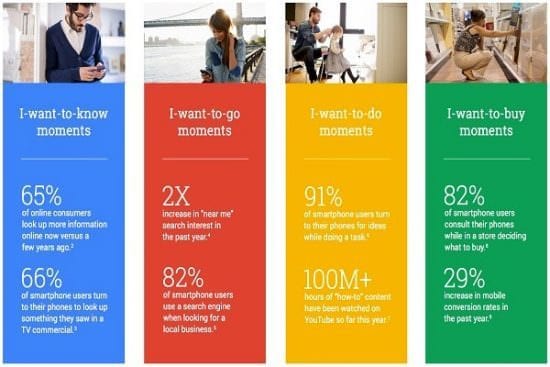"Almost all members of Generation Z prefer to shop in bricks-and-mortar stores" - IBM & National Retail Federation
Online sales continue to grow in importance, as shown by our compilation of ecommerce growth trends. But for many businesses, the days of double-digit, year-on-year growth in online sales are over. We are now in the era of ecommerce optimization where, to maintain growth, businesses are having to innovate their growth strategy, for making their online experiences engaging and persuasive.
As the world of digital continues to transform, with different generational segments of the population adapting to technology at their own distinct pace, marketers keep a close eye on retail ecommerce trends and developments. With artificial intelligence being hot topic for the future of marketing, trends like conversational commerce, using chatbots and voice search have been closely associated to widely-adopted online shopping habits amongst millennials as well as other population segments. More and more stores are moving online and constantly taking measures to improve their online shopping experience and multichannel approach.
Much like the world of digital, consumer shopping behaviour continues to evolve , as consumers discover new opportunities, both online and offline. In fact, a recent retail trends survey, commissioned by a leading London-based international brand experience consultancy, has revealed that almost three-quarters of millennials still prefer stores to online shopping. Who would have thought? In this world of digital, millennials, often regarded as an immensely digital-savvy generation, still prefers to shop in a physical store. The survey was conducted among 2000 18 to 35 year-olds living in a number of UK cities.
The 2018 Retail Sector report, titled “The Convergence Continuum”, looks at how the future of shopping has converged into a ‘continuum’ of formats, and how consumers, brands and technology are adapting to these changes. Here are the key findings of their research:
- 74% still prefer physical stores compared to just 26% preferring online shopping, with 36% preferring shopping malls.
- 80% of people went shopping as a day trip in the last month, with 50% of those going in the last week.
- 51% would love to navigate, get information and pay using their phone in-store, which is an example of omnichannel retail, read more here.
- 46% think staff hinder the shopping experience, but 48% still value help.
- 70% prefer staff but maybe just at the pay point, while 28% would happily shop without staff.
- 71% want store staff to be more knowledgeable.
- 45% would revisit stores that offered workshops and tutorials, while 23% just want to shop.
- 77% of people are open to the idea of handing over data in exchange for discounts.
- 56% would like their click and collect point to offer them a space to try on clothes and facilitate their returns and refunds.
- 73% of people prefer home delivery over click and collect.
- 49% say the most loved element of the in-store experience is touching and trying things out.
- 69% of store card holders believe they are valuable and encourage them to shop at the same store.
Commenting on the report, I-AM Group Partner, Pete Champion, said: “Both online and offline, people prefer multi-brand stores over mono-brand ones. Retail has undergone a seismic change in the last decade. Though this has been largely driven by technology, our consumer attitudes to what shopping is and does has sifted dramatically and our needs, platforms and spaces have converged. We no longer shop in specific bursts, rather shopping hums along at our pace of life.
“Retail has become a continuous chain-reaction of movements, events, experiences and motives. Shopping has become relative – relative to context, person and place and has moulded into four dimensions of space and time. Shopping is no longer about the what and where, but how and when.”
In today’s fast-paced, technology-oriented world, consumers are overwhelmed with content. Be it through ads, offers, emails, texts, social media and everything else, the industry has reached a point of “content shock where consumers cannot consume much more content than they already are”. Hence, the way brands devise their digital marketing strategy, to capture their audience’s attention, needs to change. Brands need to focus on the micro-moments of their customers’ behaviours.
Think with Google outlines micro-moments marketing as, “What used to be our predictable, daily sessions online have been replaced by many fragmented interactions that now occur instantaneously. There are hundreds of these moments everyday—checking the time, texting a spouse, chatting with friends on social media. But then there are the other moments—the I want-to-know moments, I want-to-go moments, I want-to-do moments, and I want-to-buy moments—that really matter. We call these micro-moments, and they're game changers for both consumers and brands.”









